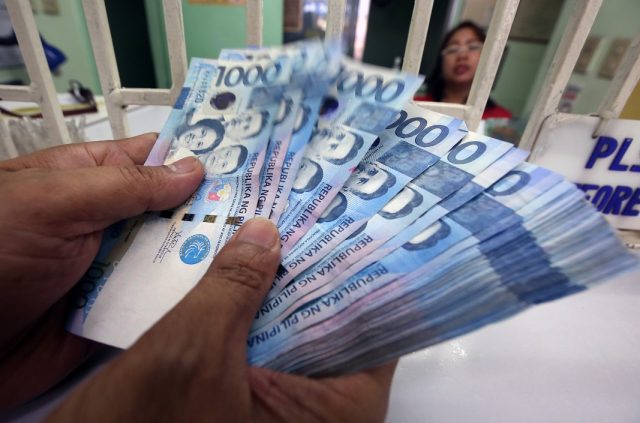(Editor’s note: Cesar Polvorosa, Jr. is a professor of economics, world geography, and international business management in Canada. He is also a published writer in economics, business, and literature.)
“May you live in interesting times,” goes the supposedly old Chinese curse. Indeed, we are living in interesting times. After the business cycle peaked in the mid-2000s, the fallout from the financial meltdown of 2007-08 still lingers. While the global economy is gradually improving, continuing volatility and highly uneven growth across regions are the major undercurrents charting the broad direction of the world of 2015.
The vitality of the world economy is anchored on the dynamism of powerhouses USA, EU, Japan, and now, China. Germany is Europe’s locomotive but together with France is losing steam. Japan’s economy continues to disappoint as hopes were dashed for a resurgence of growth under “Abenomics.” China is decelerating for structural reasons amidst fears of a cyclical bubble. In short, it’s the US economy expanding at a stellar 5% annually as of the 3rd quarter of 2014 that remains as the sole engine of growth for the world economy.
For China, it’s likely a new era of a lower growth path even if it recovers from its cyclical trough. For a more critical analysis it’s best to revisit W.W. Rostow’s Stages of Growth Theory. Briefly, Rostow in the early 1960s asserted that economies undergo distinct stages of growth and development. Of present relevance is that high performing economies go through a “take-off” stage or a period of decades’ long rapid expansion followed by a tapering off of growth as the economy matures e.g. South Korea in the past decade. China is rapidly transitioning through a “drive to maturity” stage and ultimately, to the “age of high mass consumption”- the stage of US, Japan, and the EU for the past decades.
The Economist Magazine has referred to the current confluence of international developments as echoing the 1997-1998 Asian financial crises to be capped by a possible Russian default in 2015 in a replay of late 1998 events.
We are more sanguine in our expectations as we do not expect the sudden onset of a crisis especially as triggered by Asian economies like Thailand in 1997. Overall, the headline global developments significant to the Philippine economy in 2015 are the strong recovery of the US economy and the rapid fall of oil prices. The international outlook is positive for the Philippine economy but must be tempered by concerns about turbulence and unevenness in the world economy.
Impacts of global developments on PH
Given this global scenario, what are the prospects of the Philippines as an actor in the global economic community? The general impacts on the Philippines depend on the magnitude and nature of the country’s engagement with the world economy mainly through exports, foreign direct investments (FDIs), remittances, and tourist arrivals. Increases in these four indicators, the matrix of their relationships, and multiplier effects enhance economic activities and financial stability of the country primarily through the balance of payments (BOP), employment, and the gross domestic product (GDP).
For example, foreign investments are recorded as inflows in the BOP and then incorporated in the GDP as the facilities are constructed. Employment is generated as the businesses hire personnel. As the factories operate in future time periods and its output is shipped to say, foreign markets, then there are increments in merchandise exports which are recorded in both GDP and BOP accounts.
International trade and major trading partners
| The Philippines exported $57 billion in 2013 for a 9.4% growth (NSCB). The Philippines has become a major exporter of semiconductors, electronic products, transport equipment, garments, copper products, coconut oil, and fruits and including BPO comprise a high growth export mix for years to come. |
| Philippine imports totaled $62 billion in 2013 for a -0.5% change (NSCB). While exports traditionally measure overseas demand, imports can also indicate foreign demand as some of these are used as inputs for the manufacture of exported goods such as electronics. Thus, the major Philippine imports include electronic products, mineral fuels, machinery, transport equipment, and iron and steel. The two traditional biggest markets for Philippine exports had been Japan (21%) and USA (14%). Similar for the region, China (12% share) is now a major export destination. The rest of the major export markets include Singapore, Hong Kong, South Korea, Germany, and Thailand – and these are also major sources of imports including Saudi Arabia for the oil supplies. The big export opportunity in 2015 is in expanding sales to the US on the back of a robust US economy – though the re-emergence of high debt during this nascent recovery is causing concerns. Philippine exporters should find brisk demand from Chinese consumers as China rebalances by transitioning to a domestic market-oriented economy. Japan will likely lag behind with a sluggish economy though a US$29 billion stimulus package is now being pursued. Hong Kong and Thai markets continue to be fraught with geopolitical risks. The German and French markets are likely to be lethargic. A major dynamic in 2014 was the tumbling of oil prices which the IMF has already estimated will have a net beneficial effect on world economic growth by about 0.8% though the effects will be uneven. Plunging oil prices The significant fall in energy prices in 2014 is the outcome of the confluence of rising production of US shale oil, the resumption of Libyan oil output on the supply side, and the downside of a cooling Chinese economy and feeble EU and Japanese economies on the demand side. The major variables that will impact the trajectory of oil prices in 2015 include global demand as measured by economic growth, OPEC policies and actions, the political stability in specific regions (e.g. Nigeria, Iraq, and Libya) and permits for US shale oil exports. There is a greater likelihood for the accelerated decline of oil prices to continue in 2015 as demand is expected to remain flat even as additional oil production comes on-line. As an oil importer, the Philippines benefits substantially from lower oil prices affecting particularly retail, transportation, and industry. Lower oil bill conserves foreign exchange and strengthens the Philippines’ BOP position. Lower gasoline and commodity prices provide more purchasing power for consumers and encourage spending. Swiss investment bank UBS observed in a recent research note that “a decline in global oil prices to $65 a barrel from more than $100 could boost the country’s GDP growth by 1.4 percentage points.” However, Philippine engagement with the world economy is multifaceted requiring the close examination of the other possible effects of the oil price slide on its economy. |










